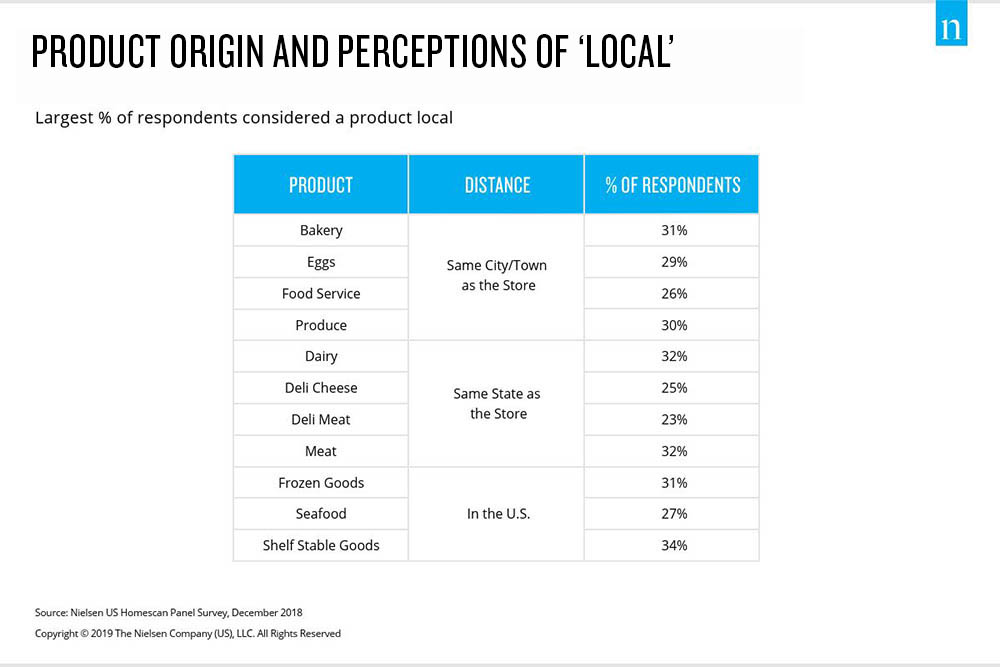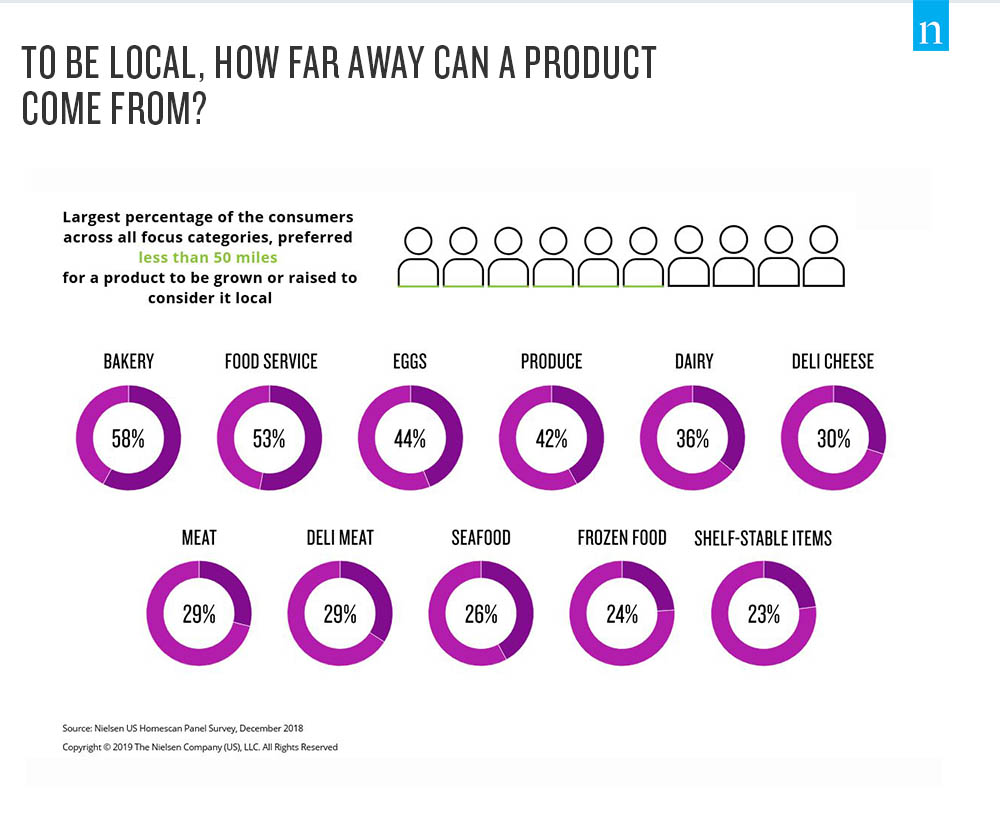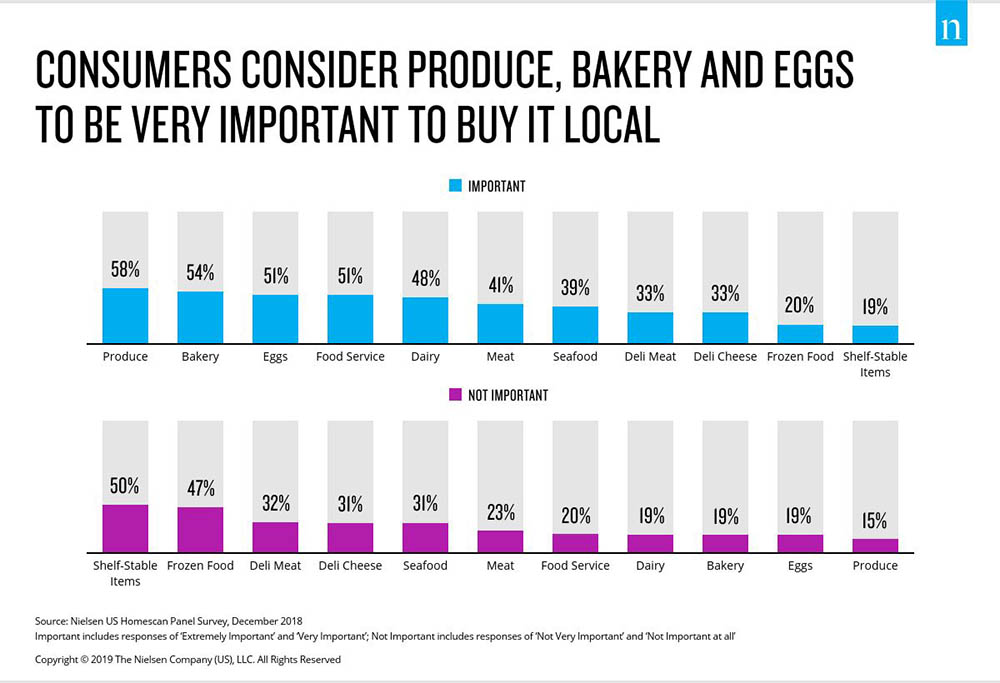While we used to associate reading with the library and famous novelists, it’s quickly become a big part of the shopping experience. That’s because as consumers seek out products that align with their personal beliefs, inspecting labels and assessing product attributes is on the rise. And as a result, manufacturers and retailers are amplifying the attributes of their offerings by touting their key attributes.
As a result, tags boasting “locally made,” images of farmers in their orchards from “upstate,” and QR codes inviting consumers to learn more about the farm their chosen steak is from are just a few ways manufacturers and retailers are appealing to budding consumer interests. And in a recent NielsenIQ study, buying local had the highest awareness among U.S. consumers, topping the charts at 46%.
Tracking a product’s origin is a difficult task because it’s frequently only marketed on the shelf at the retailer. That’s because something denoted as local will only be relevant for consumers in a specific geographic region. That said, however, we currently track $239 million of consumer packaged goods (CPG) sales that call out local on pack. But what does local really mean? The term “local” has no official definition, which leads to an array of interpretations among retailers, manufacturers, and consumers.
We know the term local is important to consumers, but in order to deliver on what consumers want, manufacturers and retailers need to understand what consumers are actually looking for. So what do consumers think local is? It seems like a simple question, but unfortunately, there isn’t a simple answer. In truth, it depends on the product. Notably, consumers state that some products are local if they come from the same city. In other cases, products can be local within the same state. There are even products that Americans view as local just as long as they come from within the U.S. In a recent survey of over 20,000 consumers, we see the highest agreement for a local definition was for shelf-stable goods, with 34% of respondents saying products in this category can be local as long as they come from within the U.S. The definition even varies significantly among consumers.

Local can also be defined in true miles, given that the size of states and towns vary. So we specifically asked respondents what is the maximum distance, in miles, from a store that a product can be produced and still be considered local. Less than 50 miles had the highest consensus among the respondents across all products, but the level of agreement varied from the highest (50%+) for bakery and foodservice to the lows (low 20%s) for frozen and shelf-stable foods.

So everyone has a different idea about what local means, but how important is it for a product to be local. Which products do consumers really care about buying local? It’s probably not too surprising, but produce tops the list, as 58% of consumers stating that buying local produce is important to them. The majority of consumers also say local is important when it comes to bakery, eggs and food service.

But what may be surprising is who feels strongest about buying local. Across consumer groups, low-income consumers are more likely to say that buying local is extremely important to them across all products compared with the general population. Young families say buying local is extremely important to them for their deli items, bakery, produce, as well as their shelf-stable and frozen goods. And Millennials say local matters most in the frozen department.
While the local topic is a complicated one, it’s an important food topic for consumers. As food transparency becomes the industry standard and companies strive to provide complete traceability through block-chain technology, it will affect how consumers shop. Understanding the mindset of your consumers is critical to curating your assortment and where those “locally made” shelf tags will get you the most bang for your buck.




